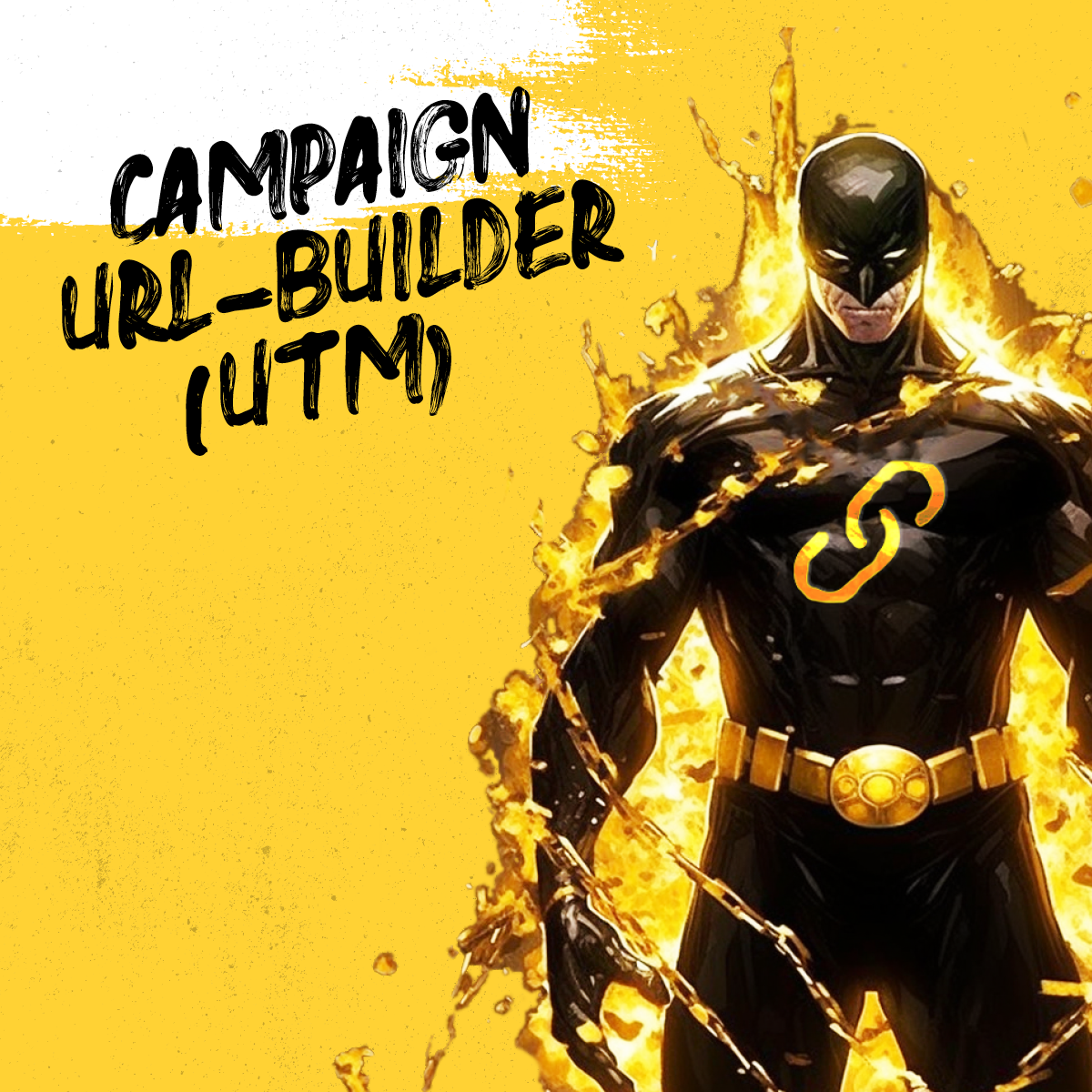Welcome to the Campaign URL Builder 👋
Discover the powerful URL Campaign Builder (UTM) that takes your marketing campaigns to the next level! Whether you're an experienced developer or a beginner, our intuitive tool optimises your online activities, helps you track and optimise your online marketing campaigns!
UTM parameters allow you to measure the success of your marketing activities by providing detailed information about the traffic on your website. Simply enter your desired domain and add the parameters to analyse the success of your campaigns:
Campaign ID: Enter a unique identifier for your campaign.
Campaign Source: Name the source, e.g. the website or social media platform, from which the traffic comes.
Campaign Medium: Select the medium, e.g. email, banner ads or social media.
Campaign Name: Enter a concise name for your campaign.
Campaign Term: Use this field for search terms or keywords.
Campaign Content: Use this field to distinguish between different ad types or content.
With a URL Campaign Builder, you can stay on top of things and maximise the effectiveness of your marketing strategy.

UTM parameters
simply explained 🚀
Campaign ID (utm_id)
Used to identify the advertising campaign to which this referral refers. Use utm_id to identify a specific advertising campaign.
Campaign Source (utm_source)
This parameter identifies the source of the traffic and indicates the specific platform or website from which the link was clicked. For example, for a link shared on Facebook, the utm_source would be "facebook".
Campaign Medium (utm_medium)
This parameter describes the marketing medium through which the link was shared or displayed. It specifies the type of campaign or channel, such as email, social media or paid advertising. For example, if the link is shared in an email newsletter, utm_medium would be "email".
Campaign Name (utm_campaign)
This parameter helps to track specific marketing campaigns or promotions. It allows you to distinguish between multiple campaigns running at the same time. For example, if a summer sale campaign is running, utm_campaign could be "summer_sale".
Campaign Term (utm_term) (Optional)
This parameter is mainly used for tracking paid keyword campaigns. It helps to identify the specific keywords of the campaign. For example, if a Google Ads campaign is running, utm_term could represent the targeted keyword.
Campaign Content (utm_content) (Optional)
This parameter allows different versions of the same marketing content to be distinguished from each other. It can be used for A/B testing or to track different elements within a campaign, such as different ad variations or placements.
Questions & Answers 🤔
First, enter a URL or domain. Examples would be
https://dryven.com
https://dryven.com/kontakt
dryven.com
Then you can add any parameters. Click on "Add parameter" and enter a key and a value. You can repeat this as often as you like.
You can also add an anchor to link to a specific section on a website.
Then simply click on the "Copy" button at the bottom. The generated URL will then be on your clipboard.
A URL (Uniform Resource Locator) is an address used to identify and access a resource on the Internet. A URL consists of different parts that provide information about the location and type of the resource.
Here is a simple explanation of what the different parts of a URL mean:
Protocol: The protocol indicates how the resource should be accessed. Examples of protocols are "http://" and "https://".
Domain: The domain is the main part of the URL and indicates the name of the website or server where the resource is hosted. For example, "example.com".
Path: The path indicates the specific location or file on the website. It can include directories and sub-directories that indicate the exact location of the resource.
Anchor (Optional): An anchor is a reference to a specific section within a web page. It is indicated by a hash character "#" and the anchor name at the end of the URL.
In addition, URL parameters can be added to convey additional information. These parameters are separated from the actual URL by a question mark "?" and consist of key-value pairs, which in turn are separated by an ampersand character "&".
Overall, a URL is a unique address that allows access to resources on the Internet, be it a web page, an image, a file or other content. By typing or clicking on a URL in a web browser, we can view or download the resource associated with it.
URL parameters, also called query parameters or query strings, are additional information added to a URL. They are used to convey specific details or instructions to a website or server.
URL parameters consist of key-value pairs separated by an ampersand (&) and added after a question mark (?) in the URL. The key represents the type of information being transmitted, and the value is the actual value associated with that key.
For example, let's consider the following URL:
https://your-domain.com/suche?keyword=shoes&color=blue
In this URL, the parameters are keyword=shoes and color=blue. The parameter "keyword" tells the server to search for the word "shoes" and the parameter "color" indicates that the desired color is "blue".
URL parameters are often used in various scenarios. They can be used to pass search queries, filter options, user settings or other data to the server.
UTM parameters, also called UTM tags or UTM codes, are a special type of URL parameters to track and analyse the effectiveness of marketing campaigns. They are often used in digital marketing to understand how users interact with different marketing channels, such as social media, email campaigns or online advertising.
UTM parameters consist of key-value pairs added to the end of a URL and separated by the ampersand character "&".
By using UTM parameters in URLs, marketers can measure the performance of various marketing initiatives. When a user clicks on a URL with UTM parameters, the information is captured by analytics tools such as Google Analytics. Marketers can then analyse the data and gain insights into which marketing channels, campaigns or ads generate the most traffic, conversions or engagement.
UTM parameters provide valuable data for marketers to make data-driven decisions, optimise their marketing strategies and understand the effectiveness of their various marketing efforts.
An anchor in a URL, also called a fragment identifier, is a part of a URL that refers to a specific section within a web page. It is indicated by a hash character "#" and the anchor name at the end of the URL.
When you go to a web page, it may contain different sections or areas, such as a heading, a particular chapter or specific information. The anchor allows you to jump directly to a specific section on the webpage instead of manually scrolling through the entire page.
Here is an example to better understand the anchor in a URL:
https://your-domain.com/products#laptops
In this case, the anchor "laptops" points to a section with information about laptops on the website "your-domain.com/products". When you open the URL in your web browser, the page will scroll directly to this section to show you the laptop products.
Anchors are particularly useful when a web page has long sections or extensive content and you want to allow users to link directly to a specific part of the page. They are also commonly used to link to specific passages within longer articles or blogposts.
It is important to note that anchors only work on the client side. That is, the browser interprets the anchor and scrolls to the appropriate place on the web page accordingly. The server itself is usually not aware that an anchor has been used.




